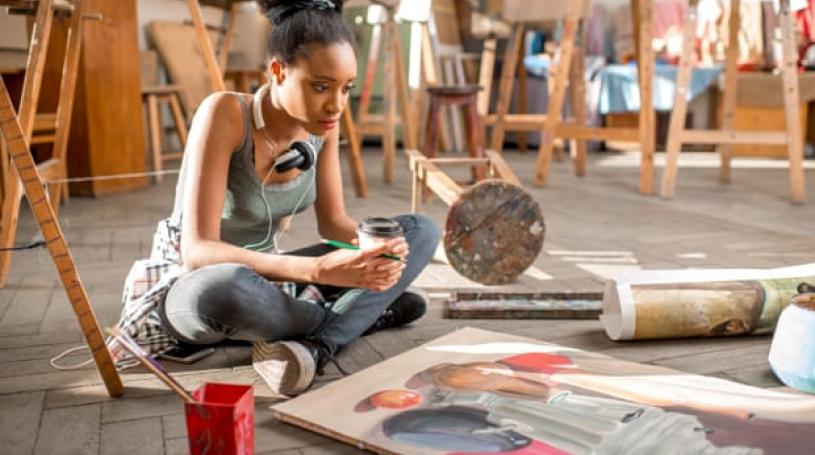Australian female artists are paid 30% less than men, new study reveals
Professional female artists in Australia can expect to earn on average 25% less than their male counterparts, according to new research released on Wednesday by Macquarie University – and that figure rises to 30% when it comes to how much money professional female artists can expect to earn from the work they produce.
The grim findings are the result of an analysis of income data from 826 working artists across multiple art forms – from visual arts and music to performance and writing – in 2016 and 2017, conducted by the university’s economics department.
Four years ago the gender pay gap between full-time working men and full-time working women across every industry and occupational category in Australia was 16%. In the succeeding interval, that gap has narrowed to 13.9% – the equivalent of $242.90 per week – according to data from the Workplace Gender Equality Agency and Australian Bureau of Statistics (ABS).
The university drew upon the Australia Council’s national survey of practising professional artists, Making Art Work, then set about exploring the variables that might explain the gaping gender pay gap.
A co-author of the preliminary paper, Dr Sunny Y Shin, told Guardian Australia that the discrepancy between male and female earnings could still not be explained after taking into account multiple mitigating factors.
“We looked at standard questions. For example, are women simply working less hours? That’s not true, the hours are similar,” she said.
“So are women working in the arts less educated? That’s not true either – women are more educated in these fields. Do they have a higher rate of disability, or non-English speaking backgrounds, or have more children?
“None of these could explain the different rate of return for men and women.
“We’re left with the conclusion that women [working in the arts] seem to be the subject of gender-related discrimination.”
As part of the research, artists were asked what they thought was the most important factor that had advanced their career.
“Women said ‘support from friends and family’ more than men did, and men reported more that it was their own talent,” she said.
In First Nations communities, the gender pay gap between male and female artists was almost non-existent.
Shin said the findings were preliminary and the issue of virtual income parity among Indigenous artists needed to be examined further, along with additional variables.
Different approaches between male and female artists towards risk, competition and negotiation also needed to be examined further, she said.
‘There remains work to be done’
The research comes on the back of an analysis prepared for the Arts Industry Council of South Australia, using ABS data.
The analysis found that during the Covid-19 pandemic, 36% of female job losses in the arts sector in South Australia translated to a 13.2% loss in wages, compared with a 27.5% job loss rate among males, resulting in 23% total wage loss.
To mark International Women’s Day last year, the Museum of Contemporary Art published interviews discussing gender discrimination with three female artists featured in its collection.
One was Janet Laurence, who said the public’s perception of artists being these “big heroic male figures” continued to be reinforced by Australia’s conservative press and political institutions.
Sanné Mestrom said she believed there was now a lot of support for female artists.
“However, the fact that there is such support actually points to the lack of it – and the need for it – in a broader sense,” she said. “Until women’s representation in exhibitions and collections is 50/50 with men, there remains work to be done.”
Fiona Hall said she suspected she may have semi-consciously “opted to ignore/defy/deflect” any gender bias she may have encountered in her career.
“I’m aware, though, that it’s too often a factor in the career trajectories of female artists – and it all too often begins at art school,” she said.

